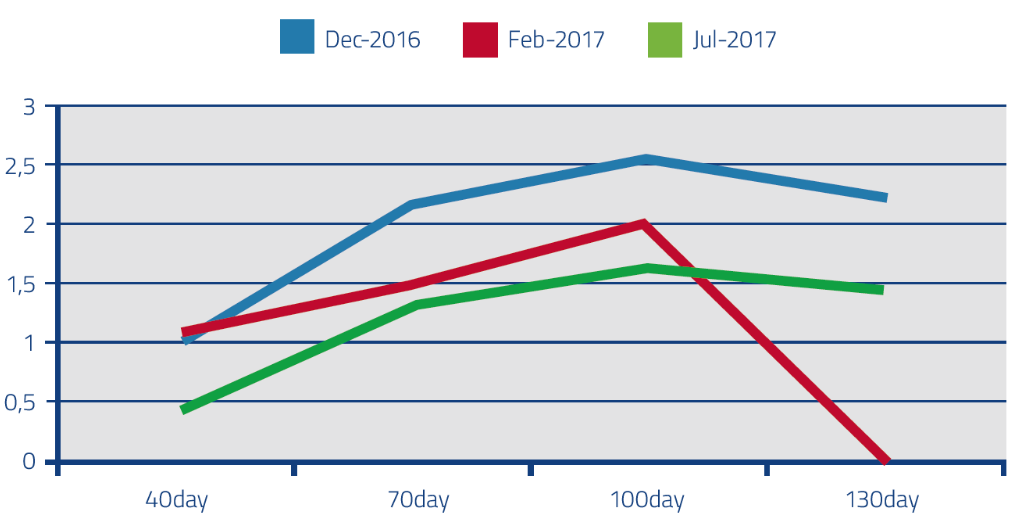



A study into the efficacy of PRRS vaccine in a Korean swine farm
An evaluation of the efficacy of Ingelvac® PRRS MLV piglet vaccination in a Korean swine farm that co-infected with PRRSV-1 and PRRSV-2.Article by: SW Lee, 1, BS Kang, SY Kang, 2, (1 Boehringer Ingelheim Vetmedica Korea Ltd; 2 Virology Laboratory, Veterinary medicine, Chungbuk National University, Korea)
Introduction
Porcine reproductive and respiratory syndrome virus (PRRSV) causes respiratory disease in nursery and grow-finisher pigs and reproductive failure in sows and boars [1]. PRRSV-infected pigs usually suffer from poor growth performance and are highly susceptible to co- or secondary bacterial and other viral infections [2].
PRRSV was first isolated in Korea in 1994 and all PRRSV isolates corresponded to genotype 2 (PRRSV-2) until 2000, genotype 1 (PRRSV-1) has recently emerged in Korea [3].
In this study, we evaluated the efficacy of Ingelvac® PRRS MLV piglet vaccination in a Korean swine farm that co-infected with PRRSV-1 and PRRSV-2.
Materials and Methods
This study was conducted in a commercial 1,700 sows, farrow to finisher farm. In 2016, this farm has experienced a negative impact in productivity due to co- infection with PRRSV-1 and PRRSV-2. We decided to execute a control program for the main pathogens involved trough piglet vaccination with Ingelvac® PRRS MLV.
In December 2016, this farm implemented a systematic breeding herd mass vaccination with Ingelvac® PRRS MLV (2ml) two times 4 weeks apart followed by quarterly mass vaccination (every 3 months). At the same time, piglet vaccination was performed with Ingelvac® PRRS MLV (2ml) at 3 weeks of age.
Before/After vaccination, blood samples were taken for examination by ELISA(IDEXX PRRS 3X) and RT-PCR to determine the presence of PRRS antibody and antigen. Also the performance data were analysed before and after vaccination period.
Results
Prior to vaccination, both PRRSV-1 and PRRSV-2 was detected in piglets (Table1). And there was rapid increase in PRRSV antibody titer after weaning (Figure 1). After piglet vaccination PRRSV-2 was detected only late nursery and the variability of SP values was reduced, suggesting a better stabilisation process (Table 1, Figure 1). Performance was improved after vaccination (Figure 2). Average growth rate was 8.2 % higher in the vaccine intervention period (86.7 % vs 94.9 %).
Table 1. PRRSV antigen detected.

Figure 1. PRRS antibody titer

Figure 2. SPC Chart of Growth rate after weaning

Conclusion
According to the results of this report, it can be concluded that the implementation of a systematic vaccination program with Ingelvac® PRRS MLV in piglets and quarterly mass vaccination of the breeding herd with Ingelvac®PRRS MLV was successful controlling PRRSV co-infection (genotype 1 & 2) resulting in significantly reduction of wean to finish mortality. Considering these results, we propose that this vaccination program can be implemented in other farms with similar PRRSV problems.
Download full article or discover more at www.prrs.com
References
1. Zimmerman, J., et al. (2006).Disease of swine. p. 387-417
2. Lunney JK et al. Virus Res. 2010;154:1-6.
3. Kiwon Han., et al. (2011). Clinical and Vaccine Immunology. P. 1600-1607









